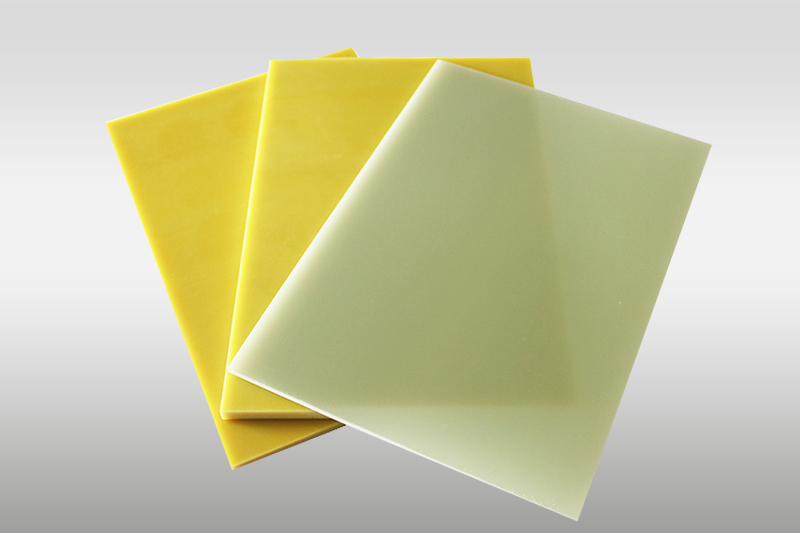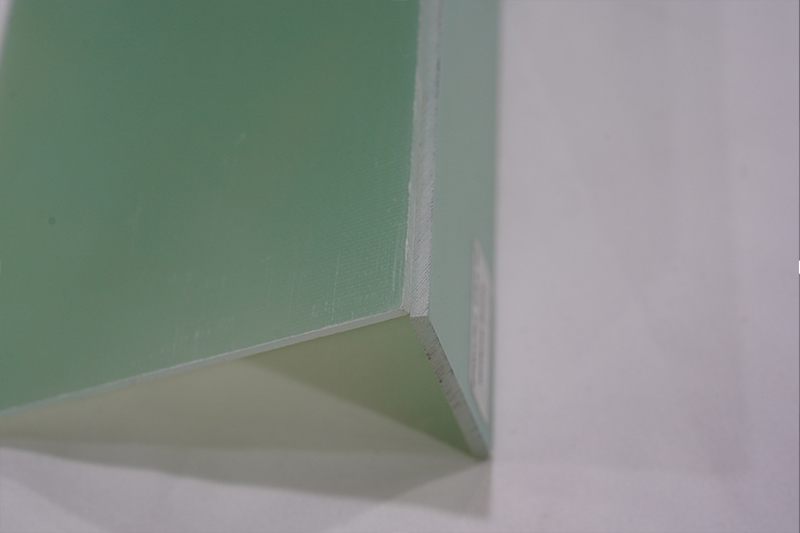In fields such as aerospace, electronics, and industrial manufacturing, engineers must prioritize thermal stability when selecting materials. As a high-performance insulating material, G10 epoxy sheet‘s temperature resistance is a key concern for users. This article will provide an in-depth explanation of the maximum temperature tolerance of G10 epoxy sheet, explaining its characteristics, applications, and performance at high temperatures to help you make a better choice.
G10 epoxy sheet is a composite material. Manufacturers first impregnate fiberglass cloth with epoxy resin and then press the layers together under high temperature and high pressure. It offers excellent mechanical strength, insulation properties, and resistance to chemical corrosion. Downstream manufacturers often use it in circuit boards, insulating gaskets, and mechanical components.

For short periods of several hours, the maximum temperature that G10 epoxy sheet can withstand is approximately 130°C to 150°C. Within this temperature range, the material’s mechanical and insulation properties remain unchanged, and there will be no noticeable deformation or damage.
If the equipment is to operate continuously for extended periods, the operating temperature of G10 epoxy sheet should be kept below 120°C. Once the ambient temperature exceeds this value, the G10 epoxy sheet will gradually age, its strength will decrease, and its insulation properties will weaken.
When the ambient temperature exceeds 150°C, the epoxy resin in G10 epoxy sheets will begin to decompose, releasing gases or carbonizing. If G10 epoxy sheets are exposed to such high temperatures for extended periods, they will become brittle or even crack, rendering them inoperable.
Resin System: Different manufacturers have slightly different epoxy resin formulations, which can affect the overall heat resistance of G10 epoxy sheets.
Processing: G10 sheets made using high-pressure molding have higher density and better heat resistance than products made using conventional processes.
Environmental Conditions: The heat resistance of G10 epoxy sheets decreases in humid or chemically corrosive environments.

FR-4 Epoxy Sheet: This material offers similar heat resistance to G10, but has lower mechanical strength.
Polyimide (PI): It can withstand temperatures up to 250°C for extended use, but is more expensive than G10.
PEEK (Polyetheretherketone): It can withstand temperatures exceeding 240°C for extended use and is a high-end specialty plastic.
Design Margin: When using G10 in high-temperature environments, engineers should allow a 20% margin for safe temperature fluctuations.
Avoid Localized Overheating: Localized high temperatures near heat-generating components within the equipment can cause G10 epoxy board failure.
Regular Inspection for Aging: If G10 epoxy board is used in high-temperature environments for extended periods, maintenance personnel should regularly inspect it for deformation and ensure proper electrical performance.
Q1: Can G10 epoxy board be used in an environment of 200°C?
No. Even a brief exposure to 200°C will permanently damage G10 epoxy board. If the device will operate at this temperature for an extended period, users should select a material with higher heat resistance, such as a ceramic matrix composite.
Q2: How can the temperature resistance of G10 be improved?
Surface coatings (such as high-temperature paint) or composite metal layers can be used, but the effect is limited. The fundamental solution is to change the material.
Q3: What is the difference in temperature resistance between G10 and FR-4?
G10 epoxy board and FR-4 epoxy board can withstand similar temperature ranges, but G10 epoxy board has greater mechanical strength and durability, making it more suitable for use in high-load environments.
G10 epoxy board can withstand a maximum temperature of 150°C for short periods of time, but the long-term safe operating temperature should be kept below 120°C. When selecting a material, consider the specific application’s temperature requirements, load conditions, and cost. If necessary, consider high-temperature materials such as polyimide or PEEK. A correct understanding of material limitations is crucial for ensuring safe and durable equipment operation.
If you need our products please write down any questions, we will reply as soon as possible.
There are three ISO certificates for quality certification. The certificates will be shown later. ISO
After receiving the advance payment, the production cycle is 15-25 days. And the transportation cycle should be calcul……
We supply with installation guide and user manual for each transformer. If you do not understand them. We will offer v……